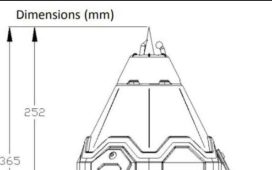The game of content marketing 2020 is a bit upped now. The web is increasingly cluttered with a never-ending content to skim through. So, it is a constant struggle to come up with a result-oriented content marketing strategy. It all boils down to how much effective tools you are using to boost your brand’s online visibility and grab the reader’s attention.
One such marketing mode is infographics.
The infographic is a combination of astounding graphics with brief text. It is a popular strategy to present information or an idea. A meaningful piece of information is created appealingly and creatively that gets more visibility through different social media platforms.
But, what it takes to master the art of creating compelling infographics?
Read More:
- Ways to Optimize Images For Better Loading Time
- How To Make Money On Amazon- A Step By Step Guide
- Do Graphic Designers Need a Professional Degree?
Compelling infographics are more than just a combination of beautiful colors and eye-catchy visuals. In fact, it goes deeper into having a collaborative team of SEO marketing individuals and talented graphic designers. Together, they build a consensus on developing top-notch visual content. More importantly, this team needs to be super creative when designing infographics content that engages the audience.
One thing that a lot of marketers and entrepreneurs often neglect is you need to come up with unique and engaging content. However, it often touches the line of impossibility when it comes to reinventing something. But, you can always spice it up according to your audience tastes and preferences.
How?
With some compelling user-centric infographics. Graphically captivating content is more capable of staying longer in users’ mind and being recalled.
“The next wave of the Web is going to be user-generated content.” – John Doerr, Venture Capitalist.
Does an Infographic Work?
Absolutely! Designing infographics that are profoundly visual-based content (and not just dull blocks of text) help get the message across more simply and quickly. Consider this –
- Such type of content is easy to make room in users mind (people tend to remember up to 80% of what they see!).
- Infographics stimulate the visual aspects of the reader’s brain. Which processes faster (it takes 250 milliseconds for a symbol for interpretation).
Imagine how it could contribute to high-rated blogs, increased website traffic, more sharing rates, website authority, and above all, better conversions for your business. All of that is plausible when you add infographics in your content marketing strategies.
Here comes a caveat though. The ability of infographics is the same as the ability of any other content you generate and promote. If it lacks relevance and usefulness, it’s less likely to work. Your reader will quickly feel it if it is just pumped out infographics to conquer visual space, or you are actually getting a message across. It’s all about how much useful information on the table for readers in a less complicated way.
In case you’re wondering how exactly adding infographics in your content marketing can boost traffic, we’ve got you covered with our tips.
[expander_maker id=”1″ more=”Read more”]
Tips to Create a Compelling Infographic
There is a plethora of useful graphic design applications out there. But even with these tools at your disposal, you still need a few things to keep into your consideration in order to prevent your infographics from being misfired.
1. Write a Catchy Yet Relevant Headline
As a good and catchy blog title grabs attention, so is the case with infographics. Think up of a compelling headline. You don’t need to tell everything in the caption. In fact, keep readers wondering so that they want to read more.
2. Create a logical flow
The significant benefit of an infographic is that it rationally shows a flow of ideas and information in a visual or graphical format. That is, of course, when it’s designed in the right way. You might get help from it for outlining your idea first and then creating the infographics later, so your argument looks cohesive and flows logically and visually.
3. Your Focus Should be Your Content
With infographics, you can distill the complex information. But, this doesn’t mean you overstuff it with loads of information that is hard to grasp all at once. If there is too much going on in your infographics, you will be more likely to lose readers. It’s because they would struggle to navigate through your overly complicated infographics. Keep in mind to just highlight your main point and keep your focus on backing your point with relevant facts and figures.
4. Target your audience
When we say target your audience, we mean choosing those design elements which will effectively resonate with your particular audience. For instance, if you are producing content for an oil painting brand, you might create an infographic with a background of canvas or oil paints. Simple graphic aspects can foster a sense of familiarity and intrigue your readers.
5. Keep Length & Size in Check
Just as you should keep focus, so should you have a manageable size and length for your infographic. Using visual components does not make your infographic immune to information overstuffing. Keeping your infographic brief and concise will increase reader engagement and encourage social shares.
6. Balance Text and Graphics
There are two elements to an infographic, and they are right there in the term itself: “info” and “graphic.” As such, you should take extra care to present your narrative with both text and graphics. Information based on the text should be comparatively short, just adequate to list important details or to attract the reader’s eye to the main subject.
Likewise, graphics should always be relevant and straightforward. Don’t avoid leaving white space as it is essential for good design. Above all, be sure to keep your focus on your main point, and don’t get too mired in design features that you forget your purpose. All text and graphics should solidly add to your argument.
Make Compelling Infographic Designs for Content Marketing a Breeze!
You might be thinking of implementing infographics in your marketing operations, or maybe you have held off because they seem a little too difficult (or costly).
Here’s the kicker, infographics are easy to design on your own. If you create a versatile infographic, you can use it on various platforms. This will help you stay on the budget line and serve the purpose as well. For each infographic, there are a half dozen ways to use it: blog headers, email images, social media thumbnails, promotional ads, eBooks, and as useful as backlinks to your business website,
As for ROI (return on investment), a nicely-planned and well-thought-out infographics can go a long way in changing your content marketing. Depending on your business, product, or service, you can see a massive leap in conversions by bringing infographics to the front of your online content marketing arsenal.
You could possibly gain:
- Improved web traffic by increasing your click-through rate by 12%
- An extended number of member registration.
- Increase your social media reach three times over
So, what are waiting for? Create a powerful and compelling infographic for content marketing now.
[/expander_maker]







